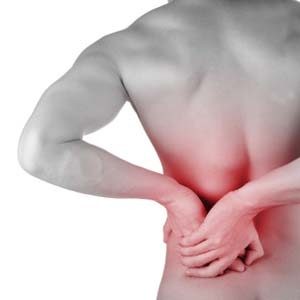Trigger point dry needling
by Eric L. Zielinski
(NaturalNews) Myofascial trigger points (MTrPs) are defined as “hyperirritable spots in skeletal muscle that are associated with a hypersensitive palpable nodule in a taut band.” Trigger point dry needling (TrP-DN), also referred to as intramuscular stimulation, is an invasive procedure using an acupuncture needle to deactivate and desensitize these trigger points. In contrast to the ancient practice of acupuncture, which concentrates on correcting imbalances in the flow of GI through channels known as meridians, TrP-DN is relatively new; having been an effective modality for just 70 years.
Brief history of dry needling
The term “dry needling” is believed to have been coined by Janet G. Travell, MD (1901-1997) in the early 1940s. Travell was a pioneer in treating myofascial pain using trigger point therapy. She discovered that the use of hypodermic needles was effective due to their strength and tactile feedback and opposed using acupuncture needles as she believed them to be too thin and flexible to properly treat a trigger point. Initially, she injected a local anesthetic into the trigger point which is a reason she used a syringe for trigger point therapy. Later, though, she found that her patients responded well to the insertion of the needle alone to break up trigger points without injecting any solution. Thus, “dry needling” took root as a solution-free modality in treating myofascial pain. In 1979, Karel Lewit performed a study confirming the efficacy in dry needling by showing the analgesic effects of needle insertion into the body. As researched progressed, TrP-DN practitioners began adopting acupuncture needles in lieu of hypodermic needles as they are less invasive.
How dry needling works and who can benefit from it
Because acupuncture needles are very fine and solid, they don’t hurt as they pass through the skin like a hollow injection needle does. The sensations people report are “deep aching,” “pressure,” “releasing,” “blood flow,” or “soreness.” The needle is left in for a very short period of time, just long enough to relax the muscle. The procedure is repeated in different areas until the muscle returns to its normal, relaxed state.
When a needle tip hits a trigger point, a characteristic, involuntary ‘local twitch’ in the muscle is observed. It has been suggested that the elicitation of local twitch responses is the most important aspect in obtaining a successful therapeutic outcome for trigger point deactivation. Still unproven, it is suspected that by stimulating the mechanoreceptors in trigger points, TrP-DN can disrupt the neurological feedback loop eliciting pain to the central nervous system. Thus, decreasing pain.
Still not quite well known, many people have received great results from TrP-DN. People, for example, who receive significant yet transient relief in massage therapy have found TrP-DN to provide longer lasting relief. Trigger point works best for people with overuse injuries, chronic pain, and sports injuries. Some purported benefits include:
• Give you lasting pain relief from head to toe
• Eliminate tension, wherever you hold it
• Heal overuse injuries
• Get rid of knots in muscles
• Help muscles heal after injury
• Release tight muscles
• Speed healing time
• Improve blood flow at a deep level
• Stimulate a muscle to work better
• Prevent injuries in the first place
• Get people back exercising ASAP
• Heal chronic injuries of muscles, tendons and joints
Sources for this article include:
http://www.youtube.com/watch?v=fKK5mfmgJsM
http://www.issapt.com/trigger-point-dry-needling/
http://books.google.com
Lewit, K. The needle effect in the relief of myofascial pain. Pain 1979; 6(1):89-90.
About the author:
Eric L. Zielinski, DC (c), MPH (c) has devoted his life to natural health and wellness for over a decade. Inspired by the timeless principles in the Bible, Eric’s mission is to seek out ways to provide people with simple, evidenced-based tools that they need to achieve the Abundant Life. Formally trained as a chiropractor, Eric’s primary approach is to serve his patients and clients through natural health care, nutrition counseling, spiritual mentorship, and empowering life strategies!